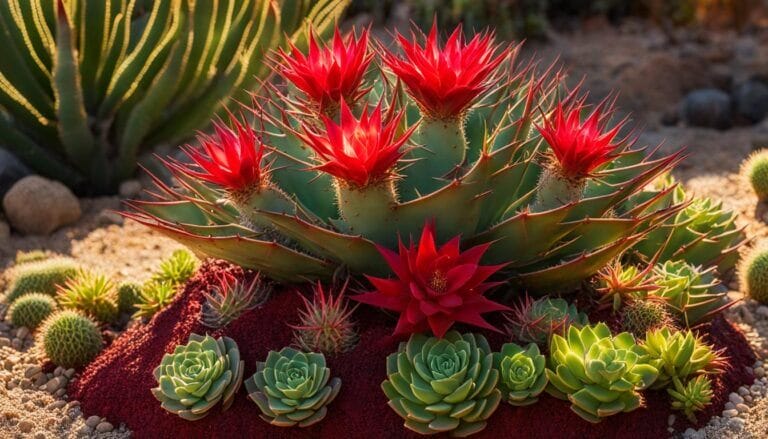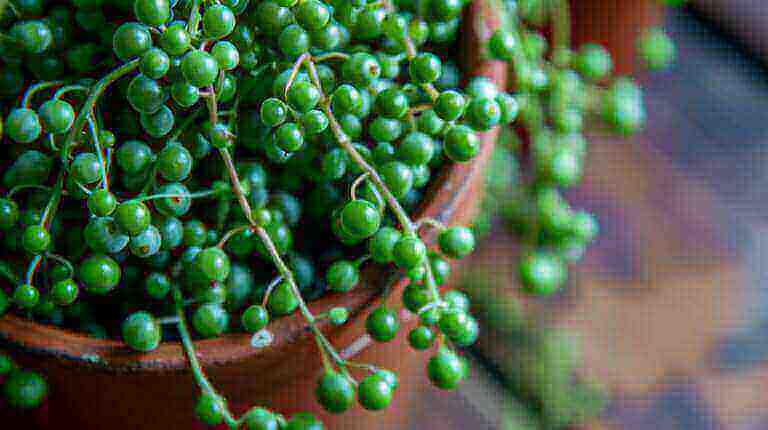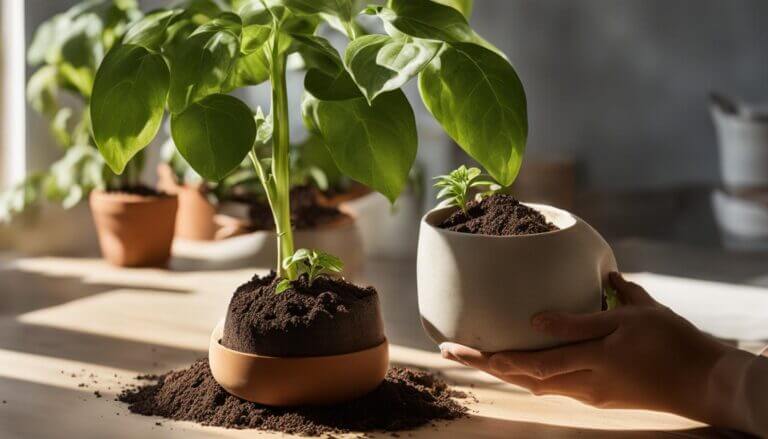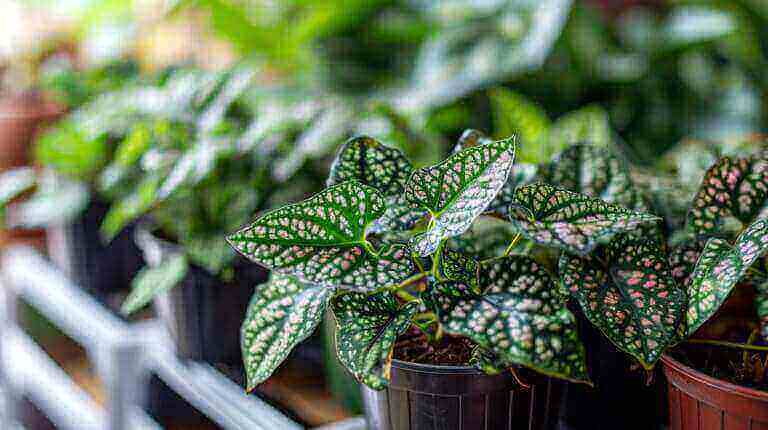Troubleshooting Common Polka Dot Plant Problems: Wilting and Leggy Growth
I have always been fascinated by the unique and vibrant foliage of polka dot plants, also known as Hypoestes phyllostachya. However, these beautiful houseplants can sometimes face issues such as wilting and leggy growth if not given proper care and conditions. Today, I want to share some troubleshooting tips to help you revive your polka dot plant and bring back its luscious and compact appearance.
Key Takeaways:
- Insufficient light is the primary cause of leggy growth in polka dot plants.
- Ensure your plant receives bright, indirect light or consider using grow lights.
- Pinching and pruning can help promote compact growth and a bushier appearance.
- Regularly feed your polka dot plant with a balanced fertilizer to keep its foliage strong.
- Proper watering and well-draining potting mix are essential to prevent leggy growth.
The Role of Light in Polka Dot Plant Legginess
Polka dot plants, also known as Hypoestes phyllostachya, can become leggy if they don’t receive enough light. Adequate light is essential for the growth and development of these plants, as it stimulates photosynthesis and prevents stretching of the stems. Polka dot plants prefer bright, indirect light, but they can tolerate lower light conditions to some extent. However, if the plant is placed in a dimly lit area for an extended period, it will begin to stretch and become leggy.
To prevent leggy growth, it is important to provide polka dot plants with the right amount of light. If you notice your plant is leggy, consider moving it to a brighter spot that receives indirect sunlight. This can be near a north-facing window or a location where it receives bright, indirect light for a few hours each day. Alternatively, you can use grow lights specifically designed for houseplants to supplement the light requirements. Position the grow lights a few inches above the plant and adjust the duration of exposure according to the plant’s needs.
While providing adequate light is crucial, it’s important to avoid placing polka dot plants in direct sunlight. Direct sunlight can cause the plant’s leaves to fade and result in leaf damage. Therefore, it’s best to strike a balance between bright, indirect light and protection from harsh sunlight to maintain the plant’s health and prevent leggy growth.
Table: Comparison of Light Conditions for Polka Dot Plants
| Light Conditions | Effect on Polka Dot Plant Growth |
|---|---|
| Bright, indirect light | Promotes healthy growth and compact foliage |
| Low light | Can tolerate lower light conditions but may result in leggy growth |
| Direct sunlight | Causes fading of variegation and leaf damage |
| Grow lights | Can supplement light requirements and prevent leggy growth |
Pinching and Pruning for Compact Growth
One effective technique for promoting more compact growth in leggy polka dot plants is pinching and pruning. Pinching involves removing the new growth at the tip of a stem, which encourages branching and a tidier appearance. By regularly pinching off tall shoots above the top node on the stem, you can stimulate growth to the side, resulting in a fuller and bushier plant.
If your polka dot plant is severely leggy, a larger pruning session can be done in early spring. This involves cutting back the plant to leave only a few inches of healthy growth and several nodes on each stem. Not only does this help control leggy growth, but the pruned stems can also be used for propagation, allowing you to grow new plants from the pruned cuttings.
When pinching or pruning your polka dot plant, it’s important to use clean and sharp tools to minimize the risk of disease. Clean the tools before and after each use with rubbing alcohol or a mild bleach solution. Additionally, make sure to sterilize the cutting surfaces to avoid spreading any potential infections.
Table: Pinching vs. Pruning
| Pinching | Pruning |
|---|---|
| Removes new growth at the tip of a stem | Cuts back the plant to leave only a few inches of healthy growth |
| Promotes branching and a tidier appearance | Controls leggy growth and stimulates new growth from the nodes |
| Regular pinching can be done throughout the year | Larger pruning session is best done in early spring |
| Pruned stems can be used for propagation | Pruned stems can be used for propagation |
Proper Nutrition and Fertilization
Proper nutrition and fertilization play a crucial role in preventing and addressing leggy growth in polka dot plants. These charming houseplants require a balanced fertilizer to ensure strong and compact foliage. Finding the right feeding schedule and the right nutrients is essential for their overall health and appearance.
When it comes to fertilizing polka dot plants, it’s important to use a balanced fertilizer that provides all the necessary nutrients. Nitrogen is an essential element for plant growth, but too much of it can lead to excessive growth and weak new foliage. Look for a fertilizer with equal or balanced ratios of nitrogen (N), phosphorus (P), and potassium (K) to ensure that your polka dot plant receives the right amount of nutrients without promoting excessive leggy growth.
Establishing a feeding schedule is also important for the proper nutrition of your polka dot plant. During the growing season, it’s recommended to feed the plant every four to six weeks. This regular feeding schedule ensures a consistent supply of nutrients, promoting strong and healthy foliage. However, be cautious not to overfeed your plant, as it can lead to nutrient imbalances and other issues.
| Fertilizing Tips for Polka Dot Plants |
|---|
| Use a balanced fertilizer with equal ratios of nitrogen, phosphorus, and potassium. |
| Feed the plant every four to six weeks during the growing season. |
| Follow the instructions on the fertilizer package for proper dosage. |
| Avoid overfertilization, as it can cause nutrient imbalances. |
The Role of Watering and Potting Mix
Proper watering and potting mix are crucial factors in preventing leggy growth in polka dot plants. These plants require a delicate balance of moisture to thrive and avoid the risk of root rot. Here are some essential tips to ensure your polka dot plant remains healthy and compact:
- Monitor soil moisture: Check the top inch of soil regularly by inserting your finger into the soil. If it feels dry, it’s time to water your plant. Avoid overwatering, as it can lead to root rot and leggy growth.
- Choose a well-draining potting mix: Polka dot plants prefer a well-draining potting mix that allows excess water to flow out. You can create a suitable mix by combining equal parts of peat moss, perlite, and a quality potting soil.
- Ensure proper drainage: Make sure your plant’s pot has drainage holes to prevent water from accumulating at the bottom. Excess water can suffocate the roots and contribute to leggy growth.
- Repot when necessary: Over time, polka dot plants may outgrow their pots, leading to reduced drainage and moisture retention. If you notice the plant’s roots circling around the pot or protruding from the bottom, it’s time to repot into a slightly larger container.
“Proper watering and potting mix are crucial factors in preventing leggy growth in polka dot plants.”
Remember that each plant has unique watering needs, so it’s essential to observe and adjust your watering routine accordingly. By providing adequate moisture and using a well-draining potting mix, you can help your polka dot plant maintain a compact and healthy growth habit.
| Common Watering Mistakes | Correct Watering Practices |
|---|---|
| Overwatering, leading to root rot | Watering when the top inch of soil feels dry |
| Underwatering, causing wilting and stunted growth | Ensuring the plant receives enough water without overdoing it |
| Using a heavy, poorly-draining potting mix | Creating a well-draining mix with peat moss, perlite, and potting soil |
| Ignoring drainage holes in the plant’s pot | Choosing pots with adequate drainage holes to avoid water accumulation |
Troubleshooting Other Common Polka Dot Plant Problems
Now that we’ve covered the issue of leggy growth in polka dot plants, let’s explore some other common problems you might encounter with these beautiful houseplants.
Yellowing Leaves
If you notice your polka dot plant’s leaves turning yellow, it could be a sign of various issues. One possible cause is overwatering, which can lead to root rot. Ensure that you’re watering your plant appropriately by checking the moisture level of the soil before watering. Another potential cause is insufficient light. Polka dot plants thrive in bright, indirect light, so make sure your plant is placed in a suitable location.
Leaf Drop
Leaf drop can occur in polka dot plants due to stress or environmental changes. Factors such as sudden temperature fluctuations, drafts, or low humidity levels can contribute to leaf drop. To prevent this issue, try to provide a stable and comfortable environment for your plant. Ensure that it’s not exposed to cold drafts or extreme temperature changes. Increasing the humidity around the plant by misting the leaves or using a humidifier can also help.
Leaf Curling
Leaf curling in polka dot plants can be a response to excessive heat, low humidity levels, or pest infestation. If you notice your plant’s leaves curling, check the temperature and humidity levels in its surroundings. Adjust the conditions if necessary, such as moving the plant away from heating vents or placing a tray of water nearby to increase humidity. Additionally, inspect the plant for pests such as spider mites or aphids. If you find any, take appropriate measures to eliminate them.
Pests and Humidity
Pests can be a common problem for polka dot plants, with mealybugs and spider mites being the most frequent culprits. Regularly inspect your plant for signs of pests, such as webs, small crawling insects, or sticky residues on the leaves. If you notice an infestation, treat your plant with an appropriate pest control solution, following the instructions carefully. Additionally, maintaining adequate humidity levels around your polka dot plant can help prevent pest infestations and keep your plant healthy.
FAQ
Why is my polka dot plant becoming leggy?
Polka dot plants can become leggy if they don’t receive enough light. Other factors such as inadequate nutrition and fast growth can also contribute to leggy growth.
How can I prevent leggy growth in my polka dot plant?
To prevent leggy growth, make sure your polka dot plant is receiving bright, indirect light. You can also move it to a brighter spot or use grow lights. Regular pinching and pruning can also encourage more compact growth.
How do I pinch and prune a leggy polka dot plant?
Pinching involves removing the new growth at the tip of a stem to promote branching. Regularly pinching tall shoots above the top node can encourage growth to the side, resulting in a fuller plant. If the plant is severely leggy, a larger pruning session can be done in early spring, leaving only a few inches of healthy growth and several nodes on each stem.
How often should I feed my polka dot plant to prevent leggy growth?
It’s best to feed your polka dot plant every four to six weeks during the growing season with a balanced fertilizer. Avoid using a high-nitrogen fertilizer, as it can cause excessive growth and weak new foliage.
How should I water my polka dot plant to prevent leggy growth?
Water your polka dot plant when the top inch of soil feels dry. Avoid overwatering, as it can lead to root rot and legginess. The potting mix should be well-draining and moist, allowing excess water to drain away. Repotting may be needed every two years or when the plant has outgrown its current pot.
What are some other common problems that polka dot plants can experience?
Polka dot plants can also experience yellowing leaves, leaf drop, and leaf curling. These issues can be caused by factors such as insufficient light, overwatering, nutrient deficiencies, and pests. Proper care, light, and humidity can help prevent and address these problems.







